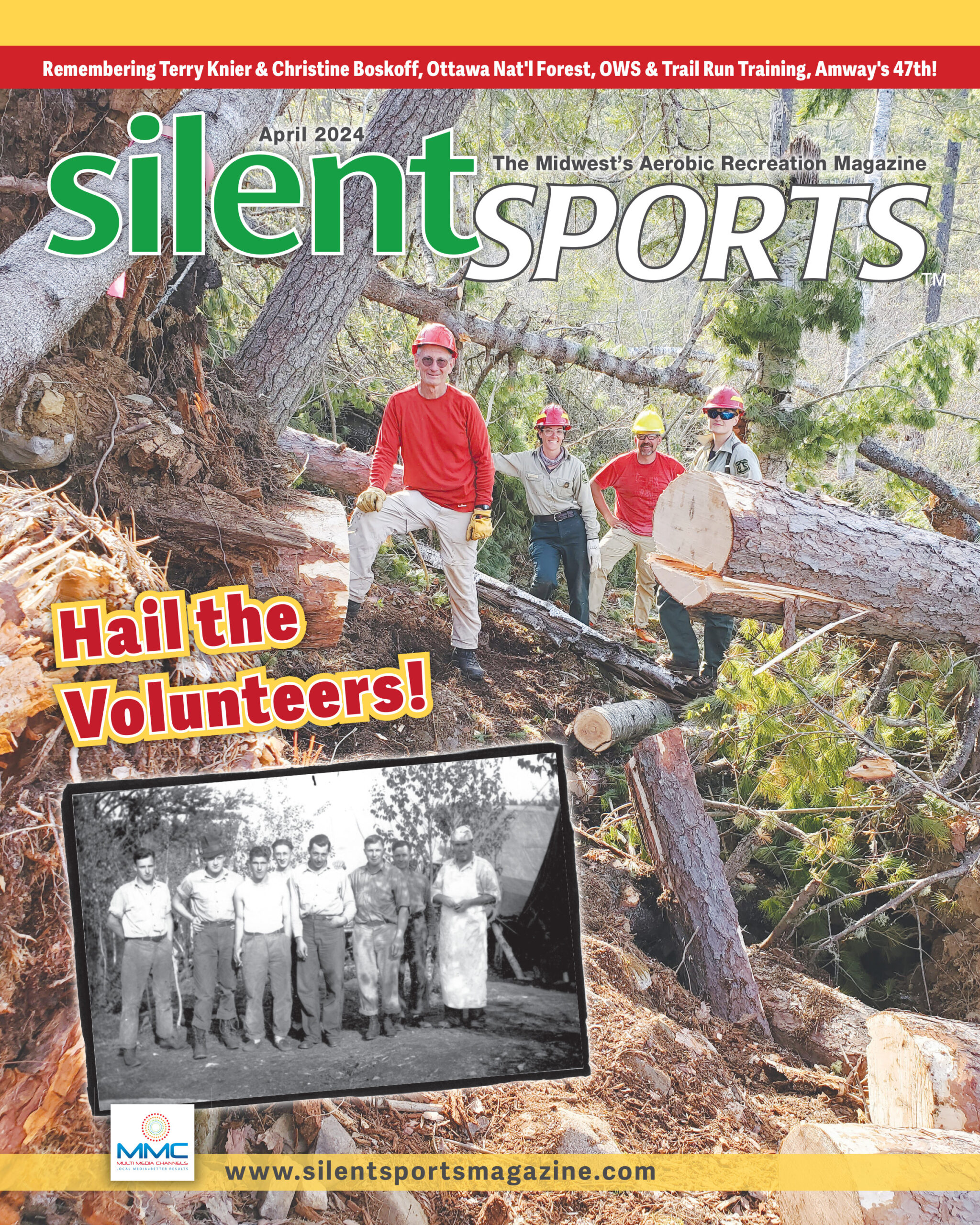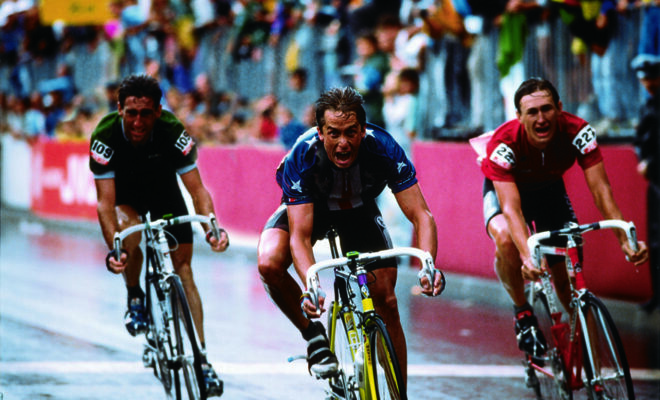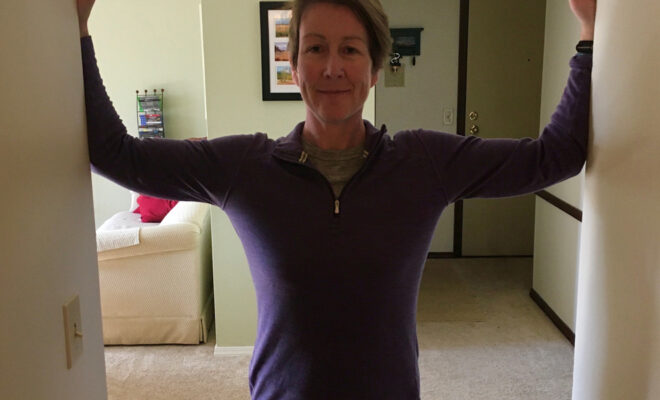Question & answer with Brett Stepanik

BICYCLING
BY KIERSTIN KLOECKNER
Suffering is in proportion to the strength which has been accorded to a person; in other words, the weak suffer more, where the trial is the same, than the strong. And, what are the elementary principles, we may ask, which compose human strength? Is it not – more than anything else – exercise, habit, experience?”
― Alexandre Dumas
For years, I had known about Brett Stepanik. I’d go to bike-centric gatherings in Madison and hear everyone discussing his latest feat. When people mentioned him, it was always in awe mixed with a little jealousy and desire to do what he does. It wasn’t, however, until recently that I truly met Brett outside of passing at bike events. It took an odd shared life event to bring us together to meet for coffee one day. I pulled up on my new titanium steed with all the bells and whistles. He pulled up on his workhorse single speed that brings him through most adventures – a surly looking beast, covered in grime and full of stories.
Although we had just met, Stepanik made me feel like I had known him for years. After all, we are a part of the same tribe, so a big hug was our greeting. Within moments, discussion about adventures began to fly. He was just gearing up for his most recent Arizona Trail Race (AZT) and one part of the famed Triple Crown challenge in the bike-packing community (the others being the Tour Divide and the Colorado Trail Race).
Although the AZT is in the middle of the pack for distance (750 miles) it’s considered the most challenging because riders must portage their bikes 21 miles through the Grand Canyon since it is illegal to ride through it. Imagine carrying your bike and all gear on your back down and up the other side. It’s also all single-track, which means no rest for the rider’s brain or body, unlike the Tour Divide which has a lot of gravel roads.
That being said, Stepanik is in love with this race. He’s done it three times and says it has completely changed him. His first time was in 2016 after completing the Tour Divide twice. He quickly realized his Midwestern mountain bike skills would be greatly challenged by the terrain, trail conditions and lack of water. But his “Dorothy, you’re not in Kansas anymore” awakening made him keep coming back for more.
As Stepanik talked about the AZT and what it meant for him being the single-speed Triple Crown record holder, his eyes lit up. I quickly realized he loved this sort of pounding – on mind, soul and body since one must work in a constant state of sleep deprivation to race it. He actually often chooses to make endurance events harder by riding out to them, completing the event and riding back. He did this last year for the Alexander (the 380-mile event held in conjunction with the famed Almanzo). Trenton Raygor, the organizer for The Filthy Fifty and The DAMn, told me about running into him on the route (Trenton was riding the 162-mile version with his friend, Craig). Brett was so blitzed out from lack of sleep, physical exertion and solitude, that he got extremely excited to the point of ringing his bike bell repetitively just because he got to spend a few miles with others on a bike. Within these few miles, they all became fast friends, and that’s why so many of us are drawn to these events. It’s not just about the riding but the cool folks who cross your path.
After that one meeting I had with Brett, I knew I had to interview him and tell his story since so many readers haven’t heard it. If you met him on the street, most likely on his cargo bike with his five-year-old son in it or on his BMX, you would never guess what he has accomplished and how simply he chooses to travel. Although his accomplishments are very well known with a specific crowd, he is not arrogant or demeaning to others. In fact, he exudes positivity and just loves to see others riding – one of the reasons he’s been working in bike shops for years.
Kierstin Kloeckner: How did you get into bike-pack racing?
Brett Stepanik: In the fall of 2010, I saw the film Ride the Divide. I made a two-year plan to do the race in 2012. Up until then, I had only raced the local 24-hour race in Wausau. That race, along with a bike tour across the country to California and back, got me going, but the long-distance endurance race bug didn’t bite until my first Tour Divide in 2012.
KK: You choose to do all these races single speed – why?
BS: I ride single speed because of its simplistic and binary nature. When I race a geared bike, I always feel I could be doing something different. After 20-plus hours in the saddle, you start to question yourself a lot. Am I in the right gear? Should I shift? Am I mashing too hard? Taking those questions out, along with the technical aspect, plays a huge role. You have a lot more to go wrong on a geared bike. The Achilles’ heel of the bike is the derailleur hanger. If that thing goes, you’re toast. With single speeds, you have two speeds – on and off. It’s simple – you’re either on top of your gear or you’re not. You’re either walking or riding, and that allows me to focus on the trail.
KK: What do you always have on you during an event?
BS: I never leave without a knife on my side. It’s for everything from protection to peanut butter. A titanium spork because I don’t want to waste plastic, and it’s way more durable (great for eating canned meat and also being able to dive into a pint of ice cream). I choose to also wear baggies because I don’t like chamois, and I want pockets. And finally, two bandanas and a buff. The bandanas are used for sun protection, a sweat rag, a towel, a tail flag or an extra feedbag. The buff is on my wrist during the day as a sweat rag, and at night it’s on my neck or head to provide warmth. I’ve used the same buff for every race since 2012, and it just keeps on ticking.
KK: Sleep deprivation is a real thing – how do you deal with it?
BS: Sleep deprivation is hard, and there isn’t one good answer. I tend to put in really long days in the saddle with 20-22 hours on the bike. I do rest periodically with maybe a 20-minute nap, but I’m usually slogging all day. Some people can push really hard and get 4-6 hours of sleep a night, but I change up my patterns according to the terrain where a consistent push works for me. I also use a two-step mental check system that I’ve developed over the years. I repeat important dates and times to myself over and over. I’m really cerebral with dates and very randomly remember precise dates. For instance, my first Divide I finished on the Fourth of July, 2012, at 3:30 or my son was born on October 30th, 2013, at 4:52 am. If I hesitate at all on a date that I for sure know, I take the next step in my process. I have to sing with lyrics to a Johnny Cash song. If I hesitate on that, then I know I’m fatigued and make myself take a 20-minute nap. I sleep with my helmet on for these so I don’t get too comfortable. We are racing after all.
KK: How do you cope with the immense calorie deficit each day?
BS: Calorie deficits are a given because your body is constantly needing energy. I gravitate to three things – fat, sugar and salt. I’m eating straight butter when I can because it’s highly soluble and as much fat as possible so my body can burn that first. I tend to crash on too much sugar, so it’s a constant balance of what my body is asking for. If I’m craving ice cream and pickle juice, so be it.
KK: What has been your scariest moment during an event?
BS: My scariest moment was on the Colorado Trail Race in 2017. On night two, I was at 12,200 feet in a torrential thunderstorm, and I woke up and couldn’t breathe. I frantically tried to turn on my headlamp and realized that while sleeping, I had burst the bag of guacamole that was in my rain jacket pocket. I was using my rain jacket as a pillow and forgot about it. The bag broke, play-doh’d through the zipper and I inhaled the guacamole into my nasal cavity and throat while sleeping. I unzipped my bivy sack to sit up, and with a last primordial push of my body, I regurgitated and purged it out and took a life-saving breath of air. I sat there, mind you still in a downpour, and tried to regain my thoughts. I zipped back up, and at this point, I was completely soaked. I laid there crying, then laughing, back to crying and so forth. I fell asleep after laughing that my death certificate would have said “death by guacamole.” Even after two years and a few washes, my jacket still has a tinge of guacamole smell when it gets wet, and I laugh.
KK: What are your 2019/2020 goals?
BS: My goals are to get better with my food. I tend to be a garbage disposal and eat anything. I know that’s the nature of these events but getting a little better of a grasp on what my body uses as better fuel will help. I’m also competing in the Colorado Trail Race again this year so getting redemption for the guacamole incident and trying to shave a few days off are also on my radar. That was the hardest of the three races in the Triple Crown for me, and I want to show up completely psyched and ready to push myself for a better time.
Want to know more about Brett? His pictures tell a thousand words. Brett is actually an amazing professional photographer as well as a bike mechanic. You can view the world through his eyes at brettstepanik.com. And if you’re ever in Madison, stop by Cargo Bike Shop and say hi to him.



